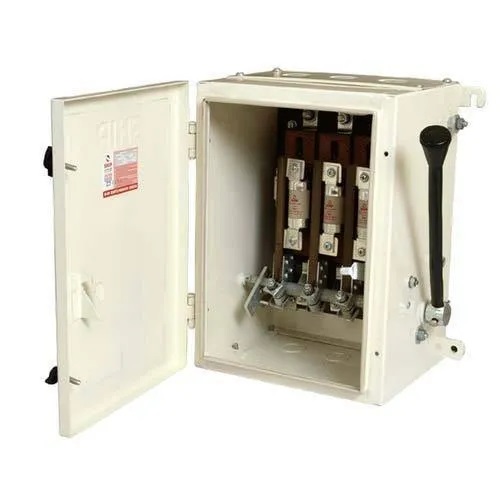The Fuse Combination Unit Market report, unveiled by Future Market Insights—an ESOMAR Certified Market Research and Consulting Firm—presents invaluable insights and meticulous analysis of the Fuse Combination Unit market. Encompassing the research’s scope and essence, this report scrupulously examines the driving factors, market size, and predictive data for Fuse Combination Unit. It furnishes intricate revenue and shipment segmentations, accompanied by a decade-long projection up to 2033. Additionally, the document evaluates key industry players, their market distribution, the competitive scenario, and regional perspectives.
Position Yourself for Market Leadership: Acquire a Thorough Market Overview and Stay Ahead of Industry Trends – Request Our Sample Now
https://www.futuremarketinsights.com/reports/sample/rep-gb-17588
Driving Forces Propelling Market Growth
The remarkable surge in the global Fuse Combination Unit market is driven by a confluence of influential factors that are shaping its trajectory towards unprecedented growth:
- Technological Advancements: Continuous innovations in fuse combination unit technology are revolutionizing the industry by offering solutions that prioritize safety, efficiency, and reliability. These advancements are enticing businesses worldwide to invest in cutting-edge offerings.
- Renewable Energy Boom: The global shift towards cleaner and sustainable energy sources has significantly increased the demand for fuse combination units. These units play a crucial role in safeguarding critical electrical systems within renewable energy installations, thus driving market growth.
- Rapid Urbanization: The rapid expansion of urban landscapes is driving the need for robust electrical infrastructure. Fuse combination units are essential components in modern urban development, ensuring the uninterrupted flow of electricity and contributing to market expansion.
- Safety Regulations: Stringent safety regulations across various industries are compelling organizations to adopt advanced fuse combination units that mitigate risks and enhance operational reliability. Compliance with these regulations is driving market growth as businesses prioritize safety measures.
Challenges Limiting Market Expansion
Despite the promising growth prospects, the global Fuse Combination Unit market faces several challenges that hinder its expansion:
- Supply Chain Disruptions: The complex global supply chain ecosystem has experienced disruptions in recent times, impacting the sourcing of raw materials and components. These disruptions have led to delays in production timelines, posing challenges for manufacturers.
- Fluctuating Raw Material Costs: Volatility in raw material prices, often influenced by geopolitical factors, presents a recurring challenge for manufacturers. Managing these fluctuations is essential to maintain cost-efficiency and profitability in the market.
- Environmental Concerns: Increasing environmental consciousness requires the Fuse Combination Unit industry to adopt sustainable manufacturing practices. Balancing innovation with eco-friendly initiatives adds complexity to market dynamics and poses challenges for manufacturers.
In conclusion, while the Fuse Combination Unit market is propelled by strong driving forces, it also faces significant challenges that require strategic navigation. Adapting to technological advancements, addressing supply chain disruptions, managing raw material costs, and embracing sustainability are crucial factors for unlocking the market’s full potential.
Driving Profitable Growth: Customized Knowledge in the Fuse Combination Unit Market
https://www.futuremarketinsights.com/customization-available/rep-gb-17588
Key Takeaways on the Benefits of Fuse Combination Units:
- Enhanced Safety: Fuse combination units incorporate switches and fuses, ensuring reliable circuit protection and minimizing the risk of electrical accidents, equipment damage, and potential hazards.
- Space Efficiency: These units save valuable installation space by combining two crucial components into a single device, making them ideal for applications with limited space or compact electrical panels.
- Cost Savings: Fuse combination units offer a cost-effective solution by integrating the functions of a switch and a fuse, eliminating the need to purchase and install these components separately.
- Streamlined Installation: The consolidation of multiple components into a single unit simplifies wiring and reduces installation time. Additionally, maintenance becomes more efficient as only one device needs to be inspected, tested, and replaced if necessary.
Competitive Landscape:
The Fuse Combination Unit industry stands as a highly competitive arena, marked by the presence of numerous contenders vying for market supremacy. In this dynamic environment, it becomes imperative for key players to employ effective strategies that pave the way for continued success.
Key Strategies Embraced by Industry Leaders:
- Product Distinction: Leading companies prioritize the development of innovative Fuse Combination Units, imbued with advanced features meticulously tailored to meet the specific demands of discerning customers. This commitment to offering unique and differentiated products affords them a distinct competitive advantage.
- Market Expansion: Industry front-runners pursue robust market expansion initiatives, encompassing both domestic and international domains. Their strategic approach involves targeting emerging economies characterized by burgeoning infrastructure requirements. To facilitate this expansion, they engage in strategic partnerships, collaborative ventures, and acquisitions, thereby gaining access to new markets, cutting-edge technologies, and expansive customer bases.
- Customer-Centric Focus: A cornerstone of success for these prominent players lies in their unwavering commitment to fostering strong and enduring customer relationships. Recognizing the paramount importance of excellent after-sales support, they invest in comprehensive technical assistance, well-structured training programs, and responsive customer service. This multifaceted approach ensures not only customer satisfaction but also the establishment of enduring, stable partnerships for the long term.
Key Players in the Fuse Combination Unit Industry
- ABB Ltd.
- Siemens AG
- Schneider Electric SE
- Eaton Corporation
- Mitsubishi Electric Corporation
- General Electric Company
- Legrand SA
- Fuji Electric Co., Ltd.
- TE Connectivity Ltd.
For Expert Guidance in Purchasing this Report, Contact our Sales Representatives:
https://www.futuremarketinsights.com/checkout/17588
Segmentation Analysis of the Fuse Combination Unit Market
By Type:
- AC Fuse Combination Units
- DC Fuse Combination Units
By Current Rating:
- 20A Fuse Combination Units
- 30A Fuse Combination Units
- 50A Fuse Combination Units
- Above 100A Fuse Combination Units
By Application:
- Industrial Fuse Combination Units
- Commercial Fuse Combination Units
- Residential Fuse Combination Units
End-Use Industry:
- Manufacturing Fuse Combination Units
- Utilities Fuse Combination Units
- Oil and Gas Fuse Combination Units
- Construction Fuse Combination Units
By Region:
- North America
- Latin America
- Western Europe
- Eastern Europe
- East Asia
- South Asia & Pacific
- The Middle East & Africa
About Future Market Insights (FMI)
Future Market Insights, Inc. (ESOMAR certified, Stevie Award – recipient market research organization and a member of Greater New York Chamber of Commerce) provides in-depth insights into governing factors elevating the demand in the market. It discloses opportunities that will favor the market growth in various segments on the basis of Source, Application, Sales Channel and End Use over the next 10-years.
Contact Us:
Future Market Insights Inc.
Christiana Corporate, 200 Continental Drive,
Suite 401, Newark, Delaware – 19713, USA
T: +1-845-579-5705
For Sales Enquiries: sales@futuremarketinsights.com
Website: https://www.futuremarketinsights.com
LinkedIn| Twitter| Blogs | YouTube





